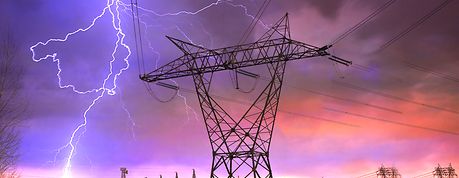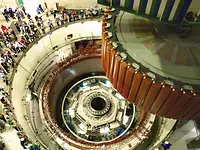Achieving climate goals - Nedre Otta, Norway
Green Energy for 60 Million People
Brazil, Belo Monte
A mammoth project successfully completed – With the commissioning of its 18th and last turbine, the Belo Monte hydropower plant on the Xingu River in the Pará state of Brazil was officially inaugurated on November 27, 2019.

Development of Belo Monte ensures that the Brazilian electricity grid will continue to be one of the cleanest in the world for many decades to come.
Belo Monte, the largest 100% Brazilian hydropower plant, has a capacity of 11,233 MW and is ranked as the third largest hydropower plant in the world. The complex has 18 vertical Francis units located in the main powerhouse at Belo Monte and a further six Bulb units located in the complementary powerhouse at Pimental.
This major undertaking achieved a number of impressive milestones, including the installation of about 100,000 tonnes of electro-mechanical equipment engaging over 30,000 employees at peak times. The three million m3 of concrete and the more than 160,000 tonnes of steel used to make this giant of the electricity sector a reality are equivalent to the construction of 37 Maracanã stadiums and 22 Eiffel Towers.
Belo Monte provides enough clean and renewable energy for about 60 million people or about 10% of total national demand.
A giant project
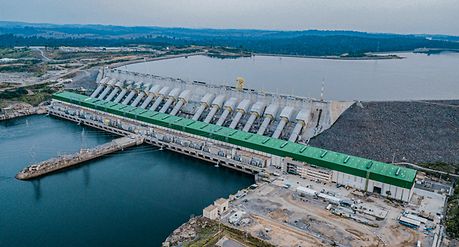
The main powerhouse Belo Monte houses 18 vertical Francis units with a total capacity of 11,000 MW, making it the world’s third largest hydropower plant.
Belo Monte has been in development for decades, but it wasn’t until 2011 that ANDRITZ Hydro received an order for electro-mechanical equipment from the project developer, the consortium Norte Energia. The ANDRITZ Hydro scope of supply included five vertical Francis turbines and generators as well as 18 excitation systems. With an output of more than 620 MW each and a diameter of 8,500 mm the Francis runners, designed, manufactured and installed by ANDRITZ Hydro, are among the largest and heaviest in the world.
The transportation of the runners from São Paulo state to Belo Monte was a complex logistical operation made by road, sea and barge including navigating through 600 km of the Amazonas and Xingu rivers. A special truck - 100 m in length and almost 9 m wide - was used for the road transport section.
This giant project also saw the construction of a dam on the Xingu River, located 40 km above the city of Altamira at the Pimental site, forming the Xingu Reservoir. A complementary powerhouse was built at the Pimental site, which has a net head of 11.4 m and a total turbine flow of 2,268 m3/sec. Pimental has a total installed capacity of 233 MW.
In 2011, ANDRITZ Hydro received a contract for electro-mechanical equipment at the Pimental hydropower plant, again from Norte Energia.
At Pimental the ANDRITZ Hydro scope of supply included six 38.8 MW Bulb turbine units, six 40.9 MVA generator units, as well as governors, excitation systems, supervision and control systems, electrical protection system, and complete mechanical and electrical auxiliaries for the plant.
Additional elements of the scope included the spillway and substation, emergency gates and stop log, two cranes and lifting equipment for the powerhouse and spillway, 18 segment gates, as well as a complete 230 kV / 69 kV substation.
The main spillway for the Belo Monte complex is one of the largest in the world and is also at the Pimental site dam. At 445.5 m across it features twenty 20 m × 22.3 m gates with a total maximum flow of 62,000 m3/sec. The erection involved some 8,500 tonnes of equipment and was completed in 352 working days.
Designed, manufactured, supplied and installed by ANDRITZ Hydro, the Kaplan Bulb turbines have a runner diameter of 6,450 mm each. The final unit, #6, went into operation in the first week of January 2017, marking the start of full commercial operations. In March 2017, the turbine performance test was carried out, surpassing the contractual objectives.

The complimentary powerhouse of Pimental has the world’s largest spillway, supplied by ANDRITZ Hydro.
Sustainable hydropower development
Alongside the impressive engineering, more than 117 socio-environmental projects were carried out during the Belo Monte and Pimental HPP development process. Around R$6.3 billion (US$1.2 billion) was invested in the community as a result. This includes 78 educational works and 31 basic health units in addition to three new hospitals. Furthermore, equipment and vehicles are made available to the public health agencies that work with the indigenous population of the region.
Development of the Belo Monte project followed more than 35 years of studies and community dialogue. This process resulted in an undertaking to have the least possible social and environmental impact while achieving Brazil’s sustainable energy production objectives. The reduction of the flooded area by more than 60% when compared to the original proposal – thus avoiding the flooding of areas occupied by indigenous communities – is one of the outcomes of this process and guaranteed the integrity of the 12 territories – 1 area and 11 indigenous lands – occupied by the indigenous populations of the Middle Xingu. Not even a single square centimeter of the more than 5 million hectares occupied by nine ethnic groups was flooded by the plant’s reservoirs.
The municipalities around the hydropower plant received investments of around R$6.3 billion (US$1.2 billion) including the expansion of a water supply system, the construction of a sewage system, and construction of five new neighborhoods built by the company. About 3,800 families who once lived on stilts today live in safe houses of 63 m2, each of which is located on a 300 m2 plot of land. With support from the developer consortium Norte Energia, the city also has a park of approximately 940 hectares along the river front.
Norte Energia also finances the Malaria Control Action Program that, in partnership with the state and municipalities, reduced the cases of the disease by 96% in Altamira, Anapu, Brasil Novo, and Vitória do Xingu.
At Pimental, a fish transposition system featuring a 1.2 km-long channel that allows the continuity of fish migration along the Xingu River was developed as part of the Belo Monte Ichthyofauna Conservation Program. The program also includes projects for monitoring ichthyofauna, taxonomic research, encouraging sustainable fishing, ornamental fish aquaculture, and monitoring of the transposition mechanism as well as the rescue of ichthyofauna.
Norte Energia also set up a seed bank from trees of native species in the surroundings of the plant. The material today underpins the production of scientific knowledge of national and international institutions.
The effort to conserve permanent preservation area also includes 26,000 hectares of permanent preservation area around the reservoirs and the derivation channel that connects the hydropower plant’s reservoirs – of which around 5,000 hectares will receive measures to recompose the vegetation cover, from the production and planting of millions of tree saplings.
Building Belo Monte
Such extensive environmental and social initiatives demonstrate the commitment of Norte Energia to generating sustainable energy for Brazil while supporting and improving the living conditions of the communities surrounding the project.
ANDRITZ Hydro is proud to have actively participated in this massive undertaking by acting in the development of electro-mechanical projects and the manufacture, supply and installation of the equipment of this extraordinary, once-in-a-lifetime project. The total ANDRITZ Hydro contribution to Belo Monte and the related Pimental project is 3,340 MW of installed capacity.
Since 1975 when the first studies were carried out, through to the final commissioning in November 2019, this project has proven to be complex and extensive. Nonetheless, it represents another milestone for economic development in the region, preserving the Amazon rainforest as well as indigenous communities. With the support of ANDRITZ Hydro, the development of Belo Monte ensures that the Brazilian electricity grid will continue to be one of the cleanest in the world for many decades to come.
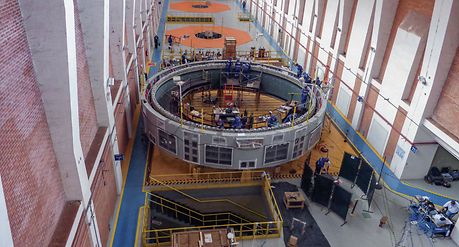
The generators for Belo Monte have a generation power of 679 MVA and impressive internal diameter of the stator of 18.5 m.
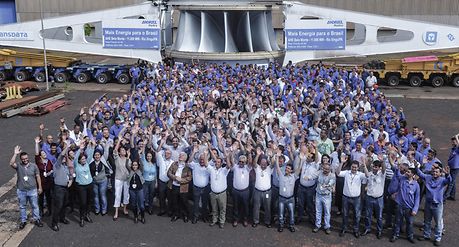
With an output of about 620 MW and a diameter of 8,500 mm, the Francis runners for Belo Monte rank among the largest and heaviest of the world (Picture taken 2015).
Technical Details
Total output: | 11,233.1 MW | |
ANDRITZ Hydro scope output: | 3,340 MW | |
Head: | 87 m |
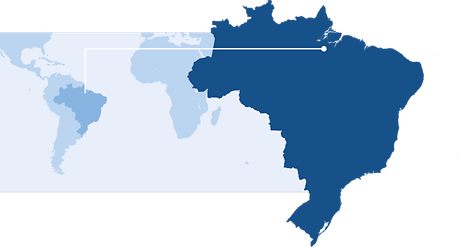
Belo Monte Powerhouse: | Pimental Powerhouse: | ||||
Output: | 5 × 620.40 MW Francis units | Output: | 6 × 39.80 MW Bulb | ||
Voltage: | 18 kV | Voltage: | 13.8 kV | ||
Runner diameter: | 8,500 mm | 18 segmented gates | 20m x 22m |
Author: Marcelo Malafaia


